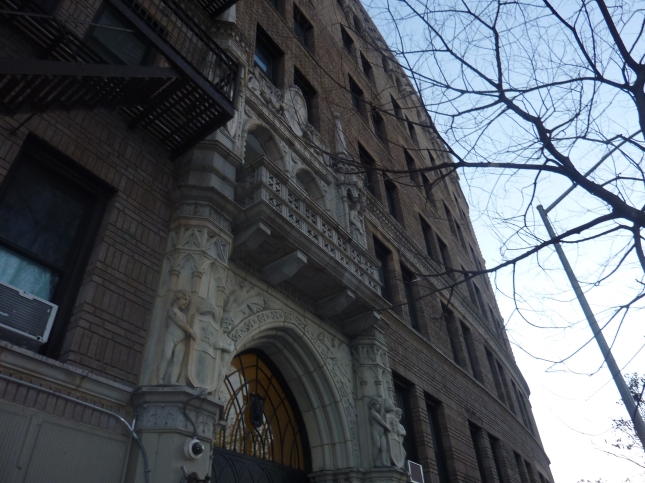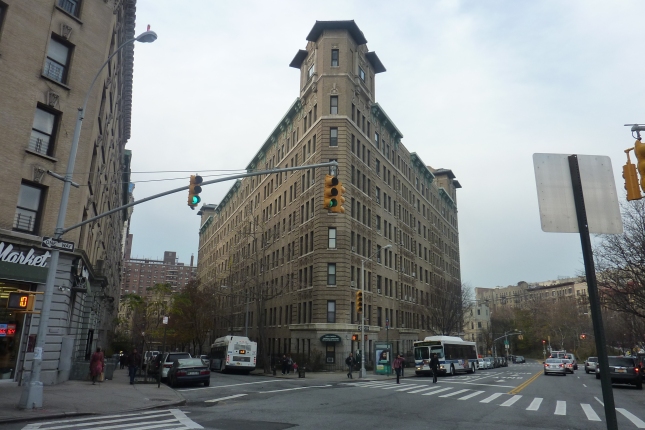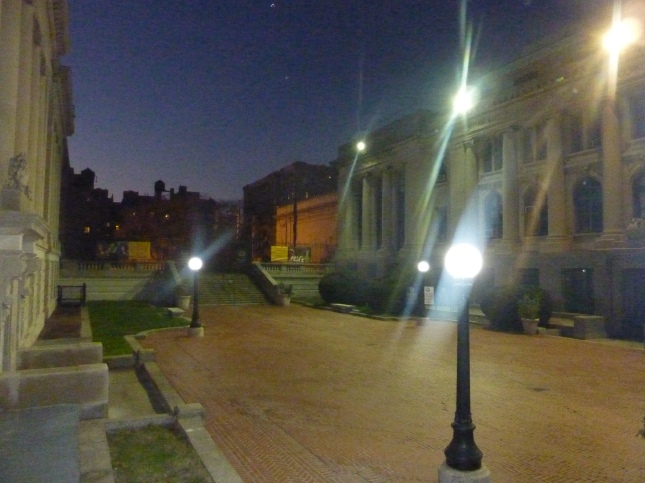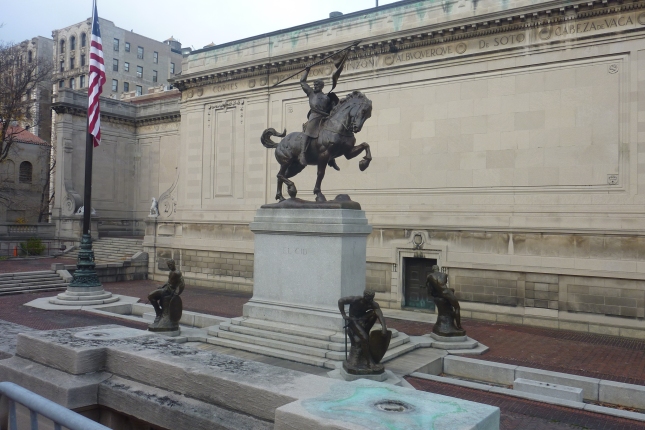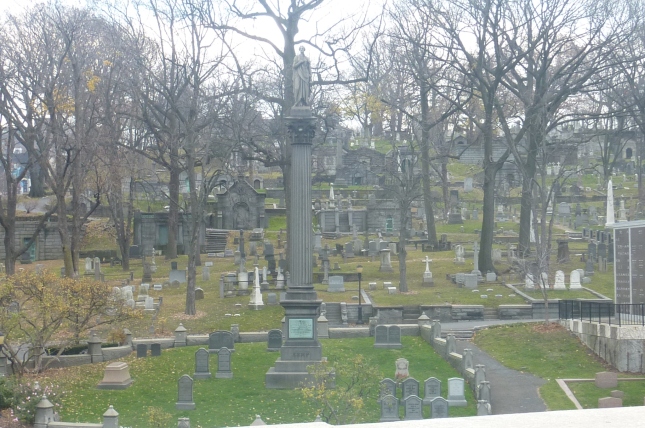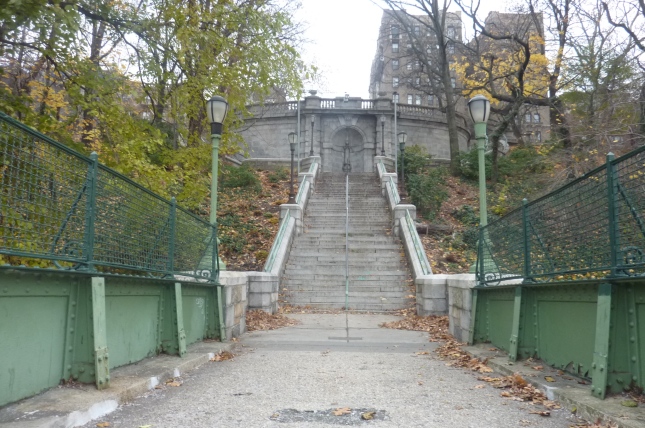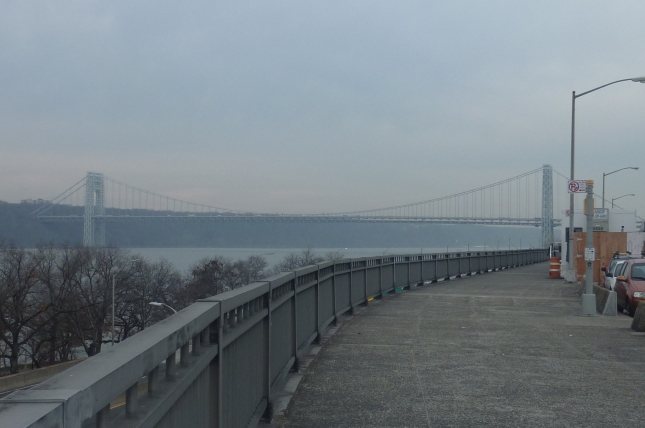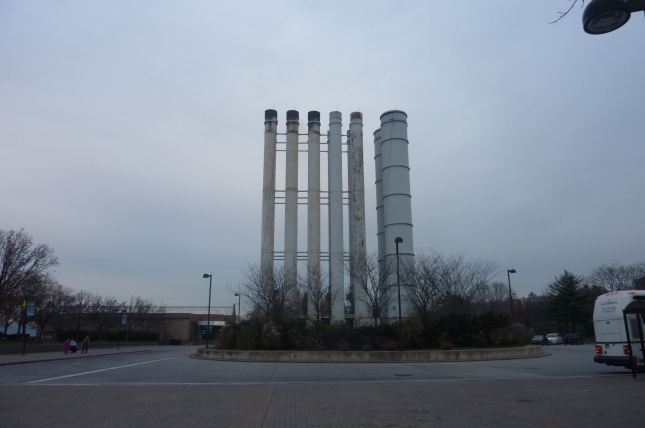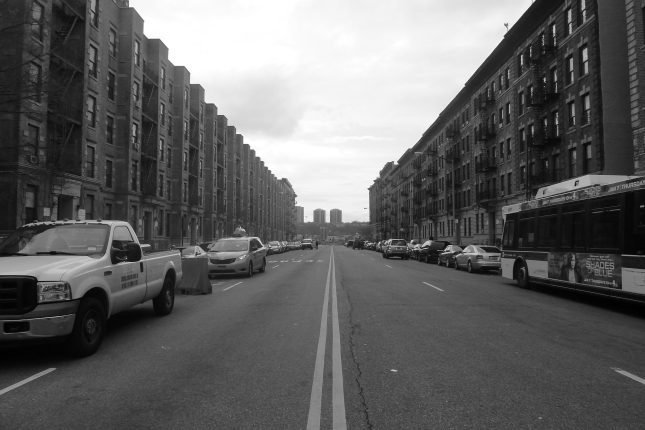This is part two in a series on Riverside Drive. For part one click the link To catch up.
Hey everyone! Thanks for the feedback and joining me on this project. This will be part two of the project Here we’ll pick up where I left off which was Plaza Lafayette, a small park with a gorgeous view of the George Washington Bridge. One of only three bridges that connects New York City with the state of New Jersey. In fact, the original bridge was actually placed further downtown but opposition by local residents and businesses forced the project uptown. However, their loss was uptown’s gain. Not only did the bridge spur development like Riverside Drive did just a few years prior, it also opened the city of Fort Lee New Jersey, to developers as well.
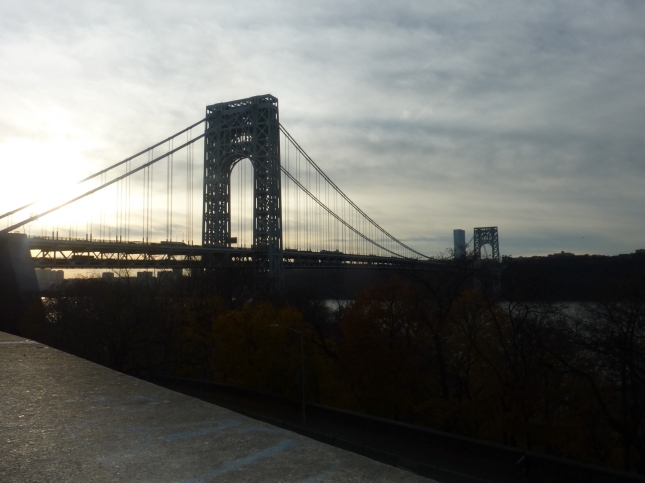
George Washington Bridge under cloud cover
The bridge was designed by architect Othmar Ammann, who also designed the Triborough Bridge and the Verazano-Narrows Bridge, won the project out from his own mentor and boss, Gustav Lindenthal. Sadly, this opened a feud between the two architects during the construction of the bridge and likely did not get resolved. Nonetheless, the project was completed in 1931, six months early and under budget. It is one of the most photographed bridges in the world.
As I walked down from Plaza Lafayette, I descended under the arched approach of the bridge and was struck at the view of the skyscrapers that I could still see from this vantage point. The sidewalk continues down the hill to the bottom where Riverside Drive once again joins the Henry Hudson Parkway. Rather than risk going through open traffic, pedestrians can return to Washington Heights via a series of ramps. The ramps however are under a highway interchange between the parkway, the bridge and local streets so while you’re driving you might see the bridge and New Jersey I was in an area that after dark I myself didn’t want to be caught dead in. Nevertheless, I made my way up for air and once again was greeted by the bridge.

Empire State Building from under the Arch approach to the George Washington Bridge
On another note that interchange claimed one victim. Before the bridge was opened local residents had access to the park below by a series of stairwells that gave the park a European feel. Sadly the highway interchange blocked the original access point and its replacement, while possibly more ADA compliant is an uninspiring afterthought. Placed in second to the needs of the cars that whizz by. I could have explored the lost stairwell further but something told me some things are best left alone. Especially if you yourself are alone.
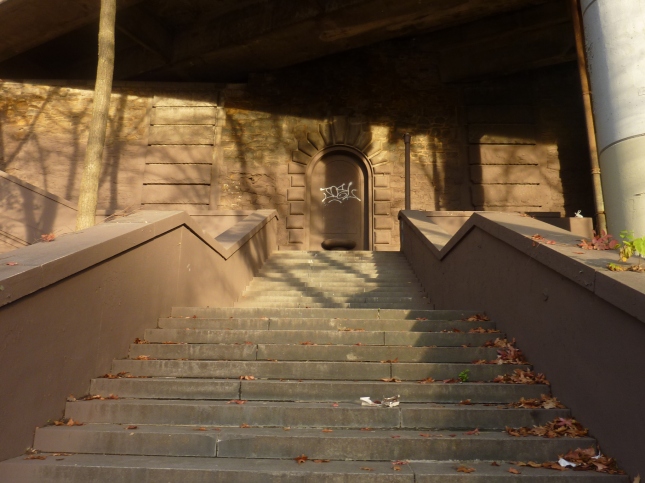
Stairway to nowhere
Haven Avenue is a short nine block street that is not in a straight line. An extension of Riverside Drive perhaps? Well I’ll never know but I can tell you that the street on a Friday afternoon is very quiet. So quiet and so New York in its way that I’m not surprised filming doesn’t take place here on a regular basis. The street is book-ended by both the George Washington Bridge and New York-Presbyterian Hospital complex, giving the street its calm and intimate setting.
The street has mostly Art-Deco and Beaux Arts inspired buildings along its brief run, only punctuated by two modernist apartment buildings and what could only described as a futuristic at best and painfully out of place at worst. 98 Haven Avenue, being built for Columbia University Medical Center’s new Medical and Graduate Education Building, strikes me as a something that belongs downtown say near the Hudson Yards and spoils the uniformity of the street. “The New York Observer” called it “the craziest building in Harlem,” as their title to their article about the structure in 2012.
Side Note: By stating it’s in Harlem and not Washington Heights, it just adds salt to the wound. Then again I’m not surprised, the Observer always struck me as the stereotypical downtowner publication. To them, Harlem and Washington Heights are places to be colonized and homogenized not to be respected in their place in New York’s history. Not to mention the mislabeling is really bloody lazy. I’ve lived in both ‘hoods and believe me when I say this, they are distinctive as they get.
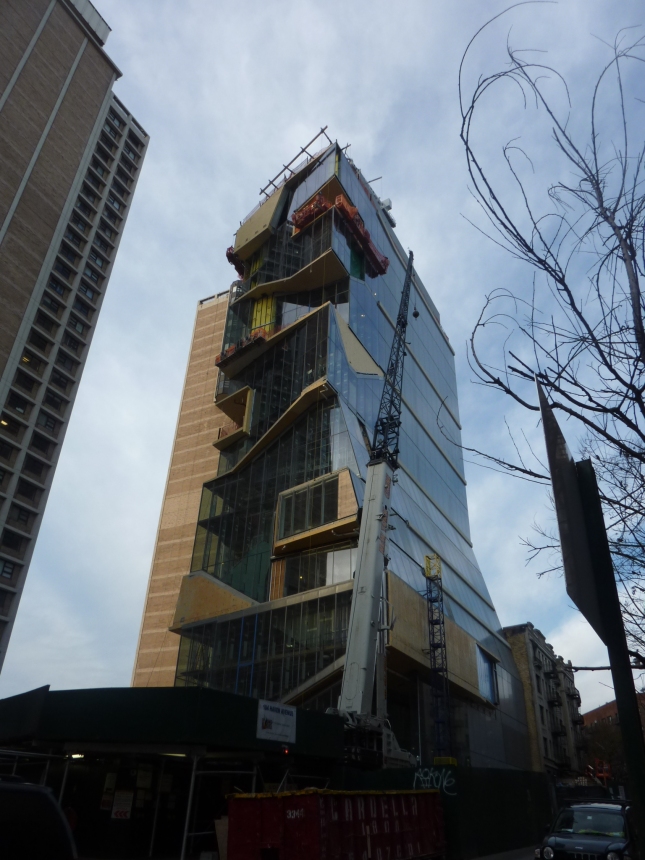
The future has come to Washington Heights
Hopping off the soap-box, and shaking my head over that crazy building, I walked along the gargantuan complex of building that make up the New York-Presbyterian/Columbia University Medical Center. The first buildings opened in 1925 and the hospital has been growing ever since. In fact within 30 years of the hospital’s existence over 100,000 babies were born there. While the complex has modernized over the years the Hospital still retains both a garden and a chapel, a welcome respite from the frenetic pace inside.
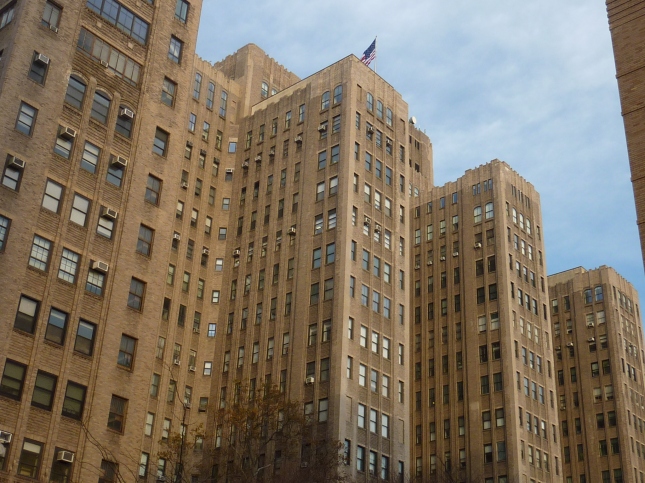
The back-end of the original hospital buildings
Turing onto 165th street, I once again returned to Riverside Drive and was greeted by yet another view of the George Washington Bridge. Nearby was a viewing platform so that joggers and dog walkers can take a break and marvel at one of the country’s greatest creation.
Now heading south again, I was face with another dilemma, I had now two paths to choose from when it comes to Riverside Drive. Due to the Grinnell family, who had been pushing development in the area during the late 1800’s they convinced the city to run Riverside Drive through the property once owned by the neighborhoods namesake John James Audubon. The route change creates the letter D or a Delta shape on the city’s grid. So now I had to choose which side of the D to walk on.
Should I hug the river and see what was next or turn left and admire some more apartment buildings? Realizing that time was getting short, I figured that the river was my best bet. So I walked the so-called Riverside Drive West. As the sun was setting the so-called golden hour illuminated the brick and mortar buildings with a radiance that could make an old and tired building look new, if only for a few minutes.
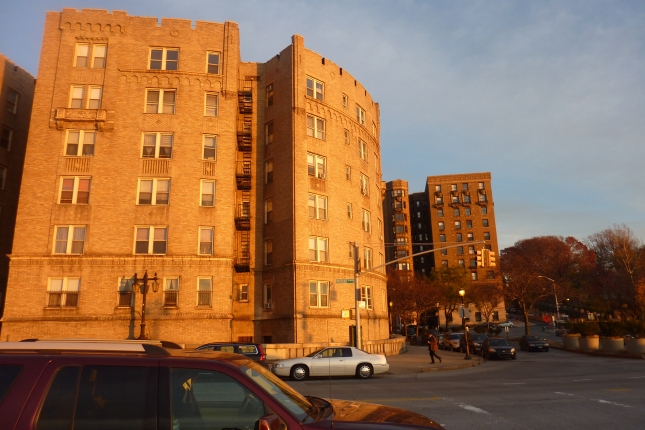
Apartment building under that golden hour glow
I was now walking along the second Riverside Drive viaduct, built in 1911 it’s less popular than its Harlem cousin but in my opinion it has a dramatic flair that the other viaduct, striking in its own right, can’t claim. For one, you can still see the Empire State Building from here. The steps that lead to the park below still exist but the highway demolished much of the original park. The park today still serves its residents well despite the Robert Moses gash of a highway nearby.
The sweeping views were so inspiring in the musical department, I threw on Whitney Huston’s “Saving All My Love For You,” because it reminded so much of the music video. Whitney is walking down The Queen’s Walk, in London realizing that she’s not going to be with her boyfriend who is married by the way. Yet, that sax solo brings me back every time. Today the London Eye sits on that site of 80’s nostalgia.

Sunset over in New Jersey
So now I’ve made it to the bottom of the viaduct and decided to walk back onto the original Riverside Drive. Almost immediately, I was struck by how beautiful the buildings were. Tucked away from bustle of Broadway and the wide expanse of the viaduct, the buildings were built during the early 20th century when the subway arrived in the neighborhood. At the time these buildings were the cream of the crop housing some wealthy or newly wealthy residents. Today the buildings are now part of the Audubon Park Historic, designated in 2009.
One building that sticks out is the Grinnell, sitting on a plot of land that was once owned by the family of the same name, the building, built in 1911, commands your attention. According to the website, Audubonparkny.com, which has an extensive history of the micro-neighborhood, the Grinnell was built at a cost of $600,000. Today that would be somewhere between 14 and 15 million dollars. For the first few decades this is what buying an apartment at the time would get you, amenities wise.
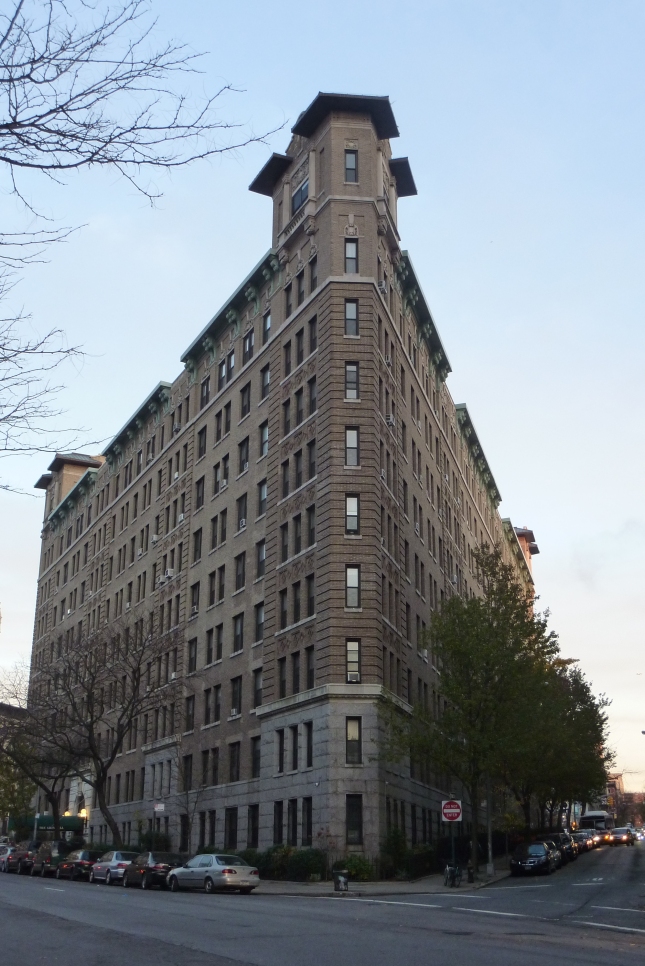
The Grinnell, refered to as “the Dakota of the North” this building is the grand dame of neighborhood.
“The Grinnell had uniformed staff, twenty-four hour elevator service, and mail delivery to apartment doors – twice a day. Every apartment had a dumbwaiter so that deliveries could be made through the rear entrance and basement. The dumbwaiters also served to transport rubbish and soiled clothes to the basement, which contained a building-operated laundry. Until recently, large drying racks remained as a reminder of those days. Stories passed on by early residents report that the Grinnell’s management gave dances for the residents every spring – on the roof, with a full orchestra.”
Sounds like a great time, well the cost of an apartment there ranges according to the realtor Streeteasy.com about just over $600,000 to a cool $1,000,000. Cheaper than the Upper West Side but pretty expensive for uptowners like me.
So guys I’m gonna leave it here I will do the rest of the crazy D. Delve into its history and keep on walking!

